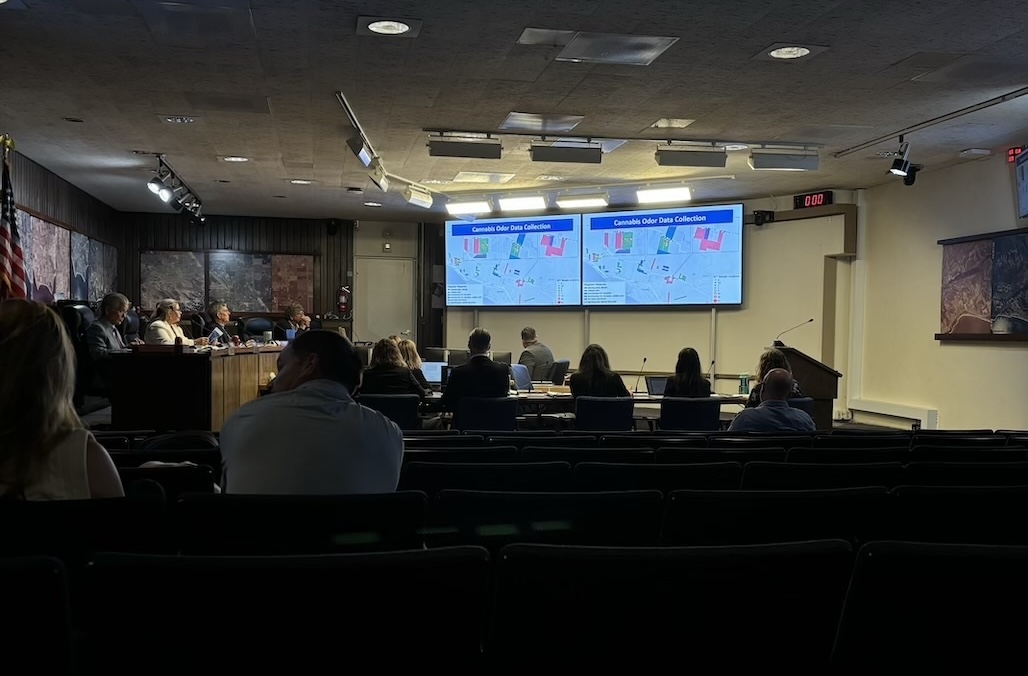Santa Barbara County Seeks Solution to Cannabis Odor Problem

From sufficient tax revenue to operating locations, the cannabis industry has received its share of heat – but no other complaint has been vocalized more than the odor surrounding the industry. Over 2,500 odor complaints have been filed in the past four years. As that number continues to rise, the county is grappling with setting and enforcing an odor threshold and determining which tools can be used to pinpoint odor sources.
The Santa Barbara County Planning Commission met on Nov. 6. to review complaints and the results of a recent study. The hearing was a follow-up to a September meeting where the board directed staff to develop a set of standards to verify odor complaints and determine where and how odor measurements should be taken. Although the November hearing did not result in a final decision, the commissioners voted to continue the discussion with a special hearing set for Jan. 22, 2025.
Previously, ordinance provisions had been deemed unenforceable due to the lack of a clear way to measure cannabis odor levels. The county is looking to establish an objective threshold for the odor. A recent cannabis odor study conducted by Planning & Development staff sought help from a tool known as the Nasal Ranger. Gwen Beyeler, Supervising Planner for the county, describes it as a “standard tool to measure nuisance odor.”
The Nasal Ranger uses a field olfactometer to measure odor strength in the air. Individuals must be trained to use it and pass a required odor sensitivity assessment. The tool is commonly used by facility operators, air quality control managers, and various citizen groups. It’s lauded for being a quick and inexpensive answer to the odor complaint problem that is so prominent in Carpinteria. As Roy Reed, 4th District Planning Commissioner, remarked, it’s like “a Sommelier in a wine tasting room.”
The study began back in May, during cool, foggy weather, and wrapped up in August under the summer sun. Data was gathered over two four-day periods in Carpinteria, targeting these distinct weather patterns to better understand how factors like temperature could affect cannabis odor. Outdoor observations showed that 75% of the measurements were classified as no odor or barely noticeable. An additional 20% were recorded as very faint or faint. Most of the readings came in with low scores – zero (no odor), one (barely noticeable), or two (faint). Only a handful of measurements hit four or five, which are considered to be faint odors. The higher scores were recorded inside cannabis facilities, while the lower readings were taken outside, at property lines. The study concluded that odor-control technologies are generally working as originally intended.
But many Carpinteria residents say otherwise.
Before the hearing, dozens of emails flooded the inbox of Hearing Support Supervisor, David Villalobos, many of which expressed frustration with the ongoing odor problem. Some residents went as far as to say that any amount of odor, no matter how faint, is intolerable. Concerned citizens also called for the use of carbon filter scrubbers to neutralize odor in the air and urged the commissioners to find ways to invite community members into the conversation. Some individuals also called for a halt on issuing new permits and licenses.
The revised ordinance would establish the odor limit at under seven odor units for a continuous three-minute period at the property line of a commercial cannabis facility. The odor intensity for an odor unit measurement of seven would read as “nuisance.”
A handful of residents also took to the podium to voice their concerns in person. “The notion of a threshold makes great sense, but we’re picking some arbitrary thresholds,” said Jared Ficker of CARP Growers, “I think this needs more work.” Many residents have expressed their concerns over the current threshold criteria, as well as the tools suggested to measure odor. Anna Carrillo of the Carpinteria Valley Association said, “We like measuring the odor threshold at the property line of the cannabis site, though we’re not sure about the objectiveness of using the Nasal Ranger tool.”
Derek Stucki, Vice President of Business Development at Cannabusters, a cannabis odor eliminating technology company, shared his disapproval of the Nasal Ranger arguing that it’s too subjective. “The problem with the subjectivity of it is we all have a nose, and they all have their own way,” he said. “I’m afraid you’re on the wrong track. At the end of the Nasal Ranger, guess what there is? A human nose.” Stucki suggested that the county consider using Volatile Organic Compound (VOC) monitoring instead, a method that provides more precise data by using specialized sensors or devices to continuously track the concentration of chemicals released by cannabis plants. In response, 3rd District Planning Commissioner, John Parke said, “I would presume they [VOC’s] can run on a 24/7 basis and be there to detect things when a human operator isn’t.”






